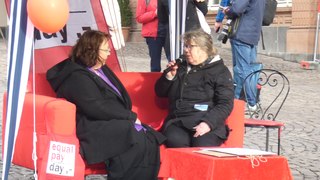Domains
The Gender Equality Index is a composite measure which consists of six core domains – work, money, knowledge, time, power, health – counting towards the Index score. The core domains are further divided into 14 sub-domains capturing key gender-equality issues in the respective area. Two additional domains – violence and intersecting inequalities – belong to the Index structure. They are not included in the core Index, because they focus on specific phenomena that apply only to a selected group of the population.

The conceptual framework is presented in the first edition of the Index [3] and was updated in 2017. [4]
The Gender Equality Index is calculated using the main EU-wide surveys and data collection covering all the EU Member States. Data sources include Eurostat (education statistics, European Union Labour Force Survey, European Health Interview Survey, European Union Statistics on Income and Living Conditions, Structure of Earnings Survey), Eurofound (European Working Conditions Survey, European Quality of Life Survey), and EIGE (Women and Men in Decision-Making).
Core domains
Work
The domain of work compares the position of women and men in the European Union's labour market. It measures gender gaps in participation in the labour market, sectoral segregation patterns and quality of work (such as flexibility of working time and career prospects).
Money
The domain of money examines inequalities in financial resources and the economic situation of women and men. It measures gaps in earnings and income, as well as the risk of poverty and income distribution.
Knowledge
The domain of knowledge shows differences between women and men in terms of education and training. This domain measures gaps in participation in tertiary and lifelong education as well as segregation in educational fields.
Time
The domain of time measures inequalities in the allocation of time that women and men spend on different activities. It measures gender gaps in the involvement of women and men in caring for their children or grandchildren, older people and people with disabilities, as well as their involvement in cooking and housework in comparison to time spent on social activities.
Power
The domain of power measures gender equality in decision-making positions across the political, economic and social spheres. The sub-domain of political power examines the representation of women and men in national parliaments, government and regional/local assemblies. The sub-domain of gender balance in economic decision-making is measured by the proportion of women and men on corporate boards of the largest nationally registered and national Central banks. The Index also presents data in the sub-domain of social power, which includes data on decision-making in research-funding organisations, media and sports.
Health
The domain of health measures gender equality in three health-related aspects: health status, healthy/unhealthy behaviour and access to health services. Health status looks at the differences in life expectancy of women and men together with self-perceived health and healthy life years. This is complemented by a set of health behaviour factors, based on recommendations from the World Health Organisation on healthy behaviour, namely fruit and vegetable consumption, physical activity, smoking and alcohol consumption. Access to health services is measured by the percentage of people who report unmet medical and/or dental needs.
Additional domains
Intersecting inequalities
Since women and men are not homogeneous groups, this domain looks at other characteristics that may affect gender equality. Five social factors or ‘intersections’ were selected for further investigation: family type, age, country of birth, disability, and education. [5] This allows for analysis of the situation of different sub-groups separately as well as gender gaps within these groups. From a policy perspective, it becomes possible to identify which groups of women and men are least/most disadvantaged and to indicate further better-targeted policy measures.
Violence
The domain of violence provides a set of indicators that can assist Member States in assessing the extent and nature of violence against women and enable the monitoring and evaluation of the institutional response to this phenomenon. To provide the most complete and reliable picture of violence against women in the EU, a three-tier structure of measurement was defined including: (1) a set of indicators on the extent of violence against women that will form the composite measure; (2) a set of additional indicators covering a broader range of forms of violence against women; (3) a set of contextual factors, which can provide insights on some of the causes and circumstances surrounding violence against women. [6]







